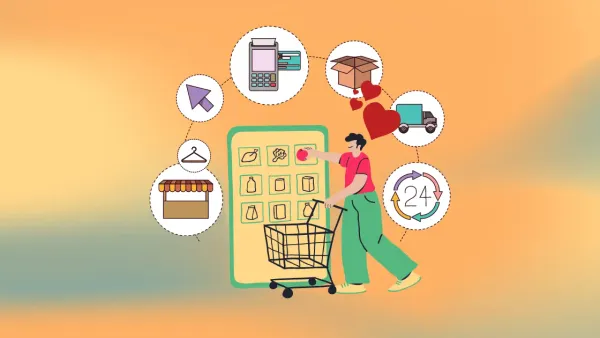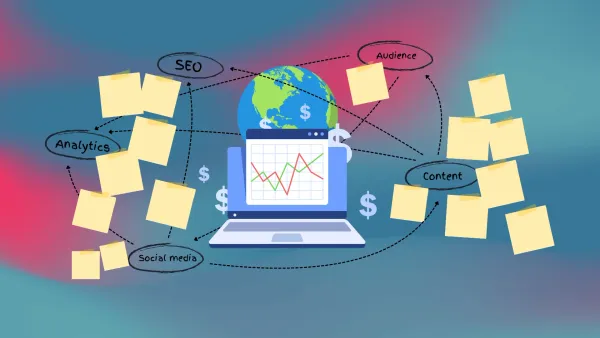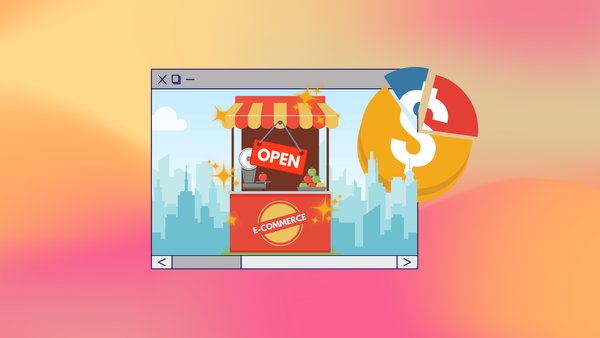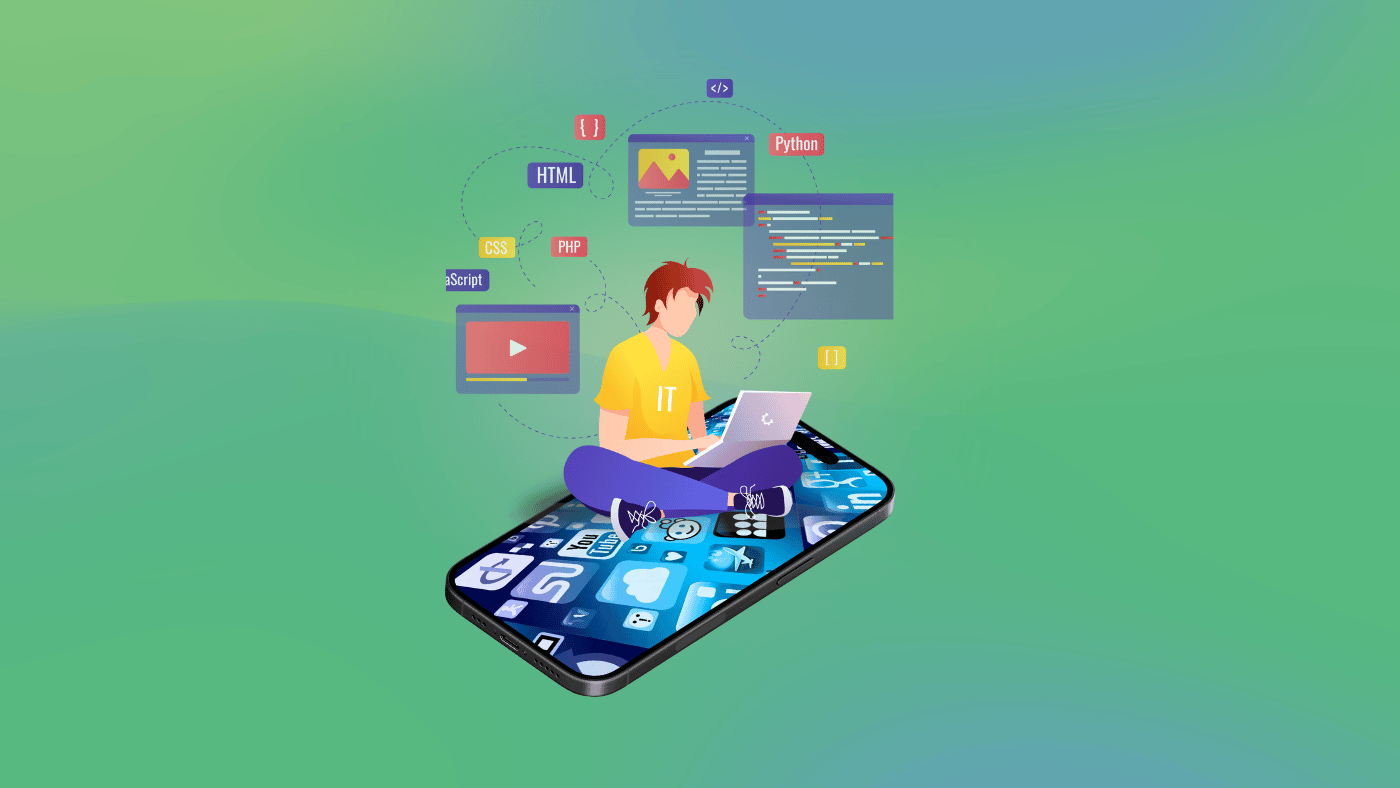Strategies to Monetize Your Mobile Apps: A Comprehensive Guide
Discover effective strategies to monetize your mobile apps in our comprehensive guide. Learn about in-app advertising, in-app purchases, subscription models, and merchandise sales. Maximize revenue from your mobile apps with our expert insights.

For startups and small businesses venturing into custom app development, monetization is a crucial aspect of turning your innovative IT solution into a sustainable business model. Successfully generating revenue from your mobile app ensures that your business can continue to grow and thrive in a competitive market.
This comprehensive guide explores eight effective strategies to generate revenue from your mobile app while maintaining a positive user experience. By understanding and implementing these strategies, you can maximize your app's potential for profitability without compromising the satisfaction and engagement of your users.
Today, mobile apps have become an essential tool for businesses to connect with their audience, enhance customer engagement, and streamline operations. However, creating a mobile app is just the beginning. The real challenge lies in effectively monetizing the app to ensure it generates consistent revenue. This requires a thoughtful approach, balancing the need for income with the importance of providing value to users.

This guide delves into various monetization techniques, ranging from traditional methods like in-app advertising and paid downloads to more innovative approaches such as subscription models, in-app purchases, and freemium offerings. Each strategy has its own set of benefits and challenges, and the key to success lies in choosing the right combination that aligns with your business goals and user expectations.
Whether you're new to app development or looking to optimize your current monetization tactics, this guide provides valuable insights and practical tips to help you achieve your financial goals and create a successful, sustainable business. By leveraging these strategies, you can not only boost your revenue but also enhance user satisfaction, ensuring long-term growth and success for your mobile app.
1. In-App Advertising
What It Is
In-app advertising involves displaying ads within your app, from banners to full-screen videos, in a way that enhances rather than disrupts the user experience.
Benefits
- Revenue Generation: In-app advertising can be a significant source of revenue without charging users for app features.
- User Engagement: Well-placed ads can actually enhance user engagement by providing relevant offers or content.
Key Points
- Non-Intrusive Ads: Implement ads that blend seamlessly into the app’s interface. The goal is to keep users engaged while generating revenue.
- Ad Networks: Use reputable ad networks like Google AdMob or Facebook Audience Network, known for high fill rates and competitive CPM rates.
Implementation Tips
- Choose the right ad format for different sections of your app.
- Avoid overwhelming users with too many ads to maintain a positive user experience.
- Use analytics to track ad performance and optimize placements.
Challenges
- User Experience: Striking the right balance between monetization and user experience can be difficult. Ads should not be so intrusive that they drive users away.
- Ad Blockers: Some users employ ad blockers, which can reduce the effectiveness of in-app advertising.
- Relevance: Ensuring that the ads shown are relevant to your users is crucial for maintaining engagement and effectiveness.
Best Practices
- A/B Testing: Regularly test different ad formats, placements, and frequencies to understand what works best for your audience.
- User Feedback: Collect and analyze user feedback to gauge the impact of ads on the overall user experience.
- Compliance: Ensure that your ad implementation complies with all relevant regulations and guidelines, such as GDPR or COPPA.
2. In-App Purchases
What It Is
In-app purchases (IAPs) allow users to buy additional features, content, or virtual goods within the app, enhancing their experience.
Benefits
In-app purchases provide a stream of revenue for developers and can significantly enhance user engagement and satisfaction.
Key Points
- Valuable Add-Ons: Offer items that users find valuable, such as premium content, virtual currency, or special features.
- Seamless Integration: Ensure the purchase process is smooth and integrates well with the app's flow.
Implementation Tips
- Clearly communicate the benefits of the in-app purchases.
- Use a secure and simple payment process to minimize friction.
- Regularly update and expand your offerings to keep users engaged.
Examples of In-App Purchases
- Subscription Services: Offer recurring access to premium content or features.
- One-Time Purchases: Allow users to buy specific items or features outright.
- Consumable Purchases: Items that can be used and repurchased, like virtual currency or extra lives in a game.
- Non-Consumable Purchases: Permanent features or content, such as unlocking a new level or ad-free experience.
Best Practices
- Transparency: Be clear about what users are getting for their money.
- Fair Pricing: Set prices that reflect the value of the in-app purchases.
- User Trust: Use secure payment methods and respect user privacy.
- Feedback Loop: Listen to user feedback and adjust your offerings accordingly.
- Ethical Considerations: Avoid manipulative tactics that pressure users into making purchases.
By following these guidelines, developers can create a successful in-app purchase strategy that benefits both the user and the app's revenue stream.
3. Subscription Models
What It Is
A subscription model involves users paying a recurring fee to access premium content or features. This model provides consistent revenue and incentivizes regular engagement.
Many businesses use this model to create a steady stream of income while building a loyal customer base. Subscription models are prevalent in industries like software, streaming services, and digital publications.
Key Points
- Consistent Value: Offer tiered subscription plans with varying levels of access to cater to different user needs.
- Free Trials: Attract new users by offering free trials, giving them a taste of the premium features.
Challenges and Considerations
While the subscription model offers numerous benefits, it also presents certain challenges:
- Churn Rate: Keeping the churn rate low is crucial. Businesses must continually engage and provide value to subscribers to prevent them from canceling their subscriptions.
- Pricing Strategy: Finding the right pricing strategy is essential. Prices should reflect the value provided while remaining competitive.
- Content Quality: Maintaining high-quality content and regularly updating it is key to retaining subscribers.
- Customer Support: Providing excellent customer support can differentiate your service and enhance subscriber satisfaction.
Examples of Successful Subscription Models
- Streaming Services: Platforms like Netflix and Spotify offer a vast library of content for a recurring fee, with different tiers providing various levels of access.
- Software as a Service (SaaS): Companies like Adobe and Microsoft offer software subscriptions, giving users access to the latest features and updates.
- Digital Publications: Newspapers and magazines like The New York Times and The Wall Street Journal offer digital subscriptions, providing premium articles and features to paying users.
Implementation Tips
- Provide regular updates and new content to retain subscribers.
- Offer different subscription lengths (monthly, yearly) to provide flexibility.
- Use reminders and notifications to inform users about subscription benefits and renewals.
A subscription model can be a powerful way to generate consistent revenue and build a loyal customer base. By focusing on delivering continuous value, maintaining high-quality content, and providing excellent customer support, businesses can successfully implement and sustain this model.

4. Sponsorships and Partnerships
What It Is
Sponsorships involve partnering with brands to create co-branded experiences or exclusive promotions, providing mutual benefits for both the app and the sponsor.
Sponsorships can also include in-app advertisements, event sponsorships, or product placements within the app to create additional revenue streams.
Types of Sponsorships
- In-App Advertisements: These can be banner ads, video ads, or interactive content that appear within the app.
- Event Sponsorships: Partnering with brands for events, either virtual or in-person, to provide exclusive experiences to users.
- Product Placements: Integrate sponsor products into the app experience, such as featuring a sponsored item in a game or app feature.
Benefits of Sponsorships
- Additional Revenue Streams: Sponsorships provide a new way to monetize your app.
- User Engagement: Well-chosen sponsorships can enhance the user experience by offering valuable content or opportunities.
- Brand Exposure: Both the app and the sponsor benefit from increased visibility and brand awareness.
Best Practices
- Be Selective: Only partner with brands that align with your app's values and target audience.
- Maintain Transparency: Clearly disclose sponsored content to users to maintain trust and credibility.
- Monitor Performance: Regularly assess the effectiveness of sponsorships and adjust strategies as needed to optimize engagement and revenue.
Examples of Successful Sponsorships
- Gaming Apps: Collaborating with popular brands for exclusive in-game items or events.
- Fitness Apps: Partnering with sportswear or nutrition brands to offer special discounts or content.
- Lifestyle Apps: Featuring products from well-known brands in user activities or challenges.
By strategically leveraging sponsorships, you can enhance user experience, increase engagement, and open new revenue channels for your app.
5. Merchandise Sales
What It Is
Merchandise sales involve selling physical or digital products directly through the app, turning it into a shopping platform. This can include branded goods, special edition items, or even digital products like e-books and downloadable content.
Strategies for Success
- Limited-Time Offers: Create urgency by offering limited-time deals or flash sales.
- Customer Loyalty Programs: Implement loyalty programs to reward repeat customers and encourage more purchases.
- In-App Promotions: Use in-app notifications and banners to promote new products and special offers.
- High-Quality Images and Descriptions: Ensure that all products have high-quality images and detailed descriptions to entice potential buyers.
Benefits
- Increased Revenue: Direct sales through the app can significantly boost your revenue.
- Enhanced User Engagement: Offering exclusive merchandise can increase user engagement and retention.
- Brand Awareness: Selling branded merchandise can enhance your brand's visibility and recognition.
Challenges
- Inventory Management: Keeping track of inventory and ensuring timely restocking can be challenging.
- Shipping and Handling: Managing logistics for physical products, including shipping and returns, requires careful planning.
- Customer Support: Providing efficient customer support for product-related queries is essential for maintaining customer satisfaction.
By effectively managing these aspects, merchandise sales can become a lucrative revenue stream for your app.
6. Freemium Model
What It Is
Offer basic features for free, with premium features available for a fee. This model allows users to experience the core functionality of a product without committing financially, thereby increasing user acquisition.
Key Points
- Balancing Free and Paid: Provide enough value in the free version to attract users, but reserve compelling features for the paid version.
- Upselling Opportunities: Use the free version to showcase premium features.
- Conversion Funnel: Create a clear path for users to upgrade from free to paid versions.
- User Feedback: Gather insights from free users to improve both free and premium offerings.
- Cost Management: Monitor the cost of providing the free version to ensure it doesn't outweigh the benefits.
Examples
- Spotify: Offers free access with ads and limited skips, while premium users enjoy ad-free listening and offline downloads.
- Trello: Provides basic project management tools for free, with advanced features like integrations and automation in the paid version.
- Dropbox: Allows free users a limited amount of storage, encouraging them to upgrade for more space and advanced sharing options.
Benefits
- Increased Reach: Attract a large user base quickly.
- Revenue Potential: Convert a percentage of free users into paying customers.
- Market Testing: Validate product-market fit with a wide audience before scaling.
Challenges
- User Retention: Keep free users engaged without giving away too much value.
- Monetization: Effectively convert free users to paying customers.
- Resource Allocation: Balance between improving free and premium features.
Implementation Tips
- Limitations: Clearly define the limitations of the free version.
- Premium Value: Ensure premium features are compelling enough to justify the cost.
- Continuous Improvement: Regularly update both free and premium versions based on user feedback.
- Marketing: Use targeted campaigns to convert free users to paid users.
- Support: Offer excellent customer support to both free and premium users to enhance overall user experience.
7. Data Monetization
What It Is
Monetize anonymized user data by providing market insights to interested parties. Monetizing data can create additional revenue streams and provide valuable insights for business growth.
Key Considerations
- User Privacy: Ensure compliance with data protection regulations like GDPR.
- Valuable Insights: Focus on aggregated, trend-based data that provides genuine value.
- Transparency: Clearly communicate to users how their data will be used and monetized.
- Data Security: Implement robust security measures to protect user data from breaches.
- Ethical Use: Use data ethically and avoid practices that could harm users or compromise trust.
Implementation Tips
- Data Collection: Gather anonymized user data in compliance with privacy regulations.
- Data Analysis: Analyze the data to extract meaningful insights and trends.
- Market Research: Identify potential buyers or industries that could benefit from the insights.
- Legal Compliance: Ensure all data monetization practices comply with relevant laws and regulations.
- Partnerships: Form partnerships with interested parties to sell the insights.
- Monitoring and Evaluation: Continuously monitor the monetization process and evaluate its effectiveness.
Potential Challenges
- Regulatory Changes: Stay updated with changes in data protection laws to maintain compliance.
- User Trust: Maintain user trust by being transparent and ethical in data usage.
- Data Quality: Ensure the data collected is of high quality and provides valuable insights.
- Competitive Market: Be aware of competitors and strive to offer unique and valuable insights.
8. Affiliate Marketing
What It Is
Earn commissions by promoting other companies' products or services within your app. This can be done by integrating affiliate links, banners, or even creating content around the affiliate products.
Affiliate marketing can be a lucrative way to monetize your app, provided it is done thoughtfully and strategically. By selecting relevant affiliates and integrating them seamlessly into your app, you can enhance user experience while generating additional revenue.
Key Points
- Relevance: Choose affiliates that align with your app's purpose and user interests.
- Seamless Integration: Incorporate affiliate offers naturally within the user experience.
Best Practices
- Transparency: Clearly disclose affiliate partnerships to your users to maintain trust.
- Quality Over Quantity: Focus on a few high-quality affiliates rather than overwhelming users with numerous offers.
- User Experience: Ensure that the inclusion of affiliate links does not disrupt the user experience.
- Regular Updates: Keep your affiliate content up-to-date to reflect the latest offers and promotions.
Implementation Tips
- Identify Potential Affiliates: Research and list companies whose products or services complement your app.
- Join Affiliate Programs: Sign up for affiliate programs offered by these companies.
- Integrate Affiliate Links: Embed affiliate links within your app's content, ensuring they are relevant and add value to your users.
- Create Engaging Content: Develop content that highlights the benefits of the affiliate products, such as blog posts, tutorials, or reviews.
- Monitor Performance: Track the performance of your affiliate links and adjust your strategy based on what drives the most conversions.
Infographic of 8 App Monetization Strategies
Conclusion
Monetizing your mobile app effectively involves a strategic combination of these methods, tailored to your user base and app type. By implementing a mix of advertising, purchases, subscriptions, partnerships, and data utilization, you can create multiple revenue streams while enhancing the user experience.
For startups and small businesses, the key is to balance monetization with providing value. Remember that user experience should always be the priority – a well-monetized app that users don't enjoy won't succeed in the long run.
As you embark on your app development journey, consider partnering with a experienced digital agency to help navigate these monetization strategies and create custom app solutions that drive your business forward.
Further Reading:
For more insights and personalized assistance on app monetization and custom app development for startups, contact us at mediakular. Let's turn your app into a revenue-generating powerhouse while delivering innovative IT solutions for your growing business!





